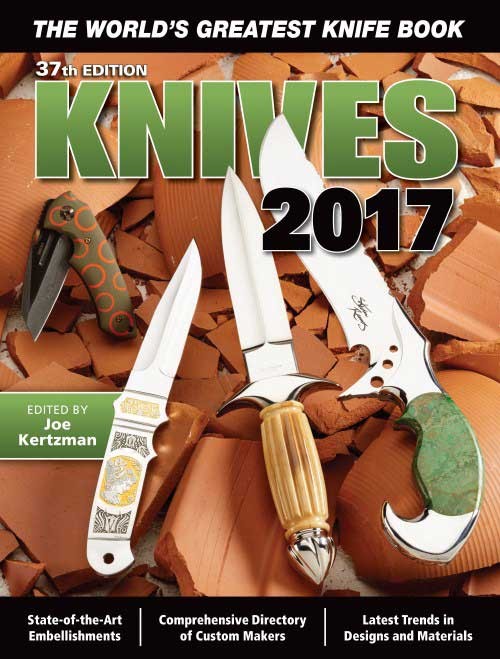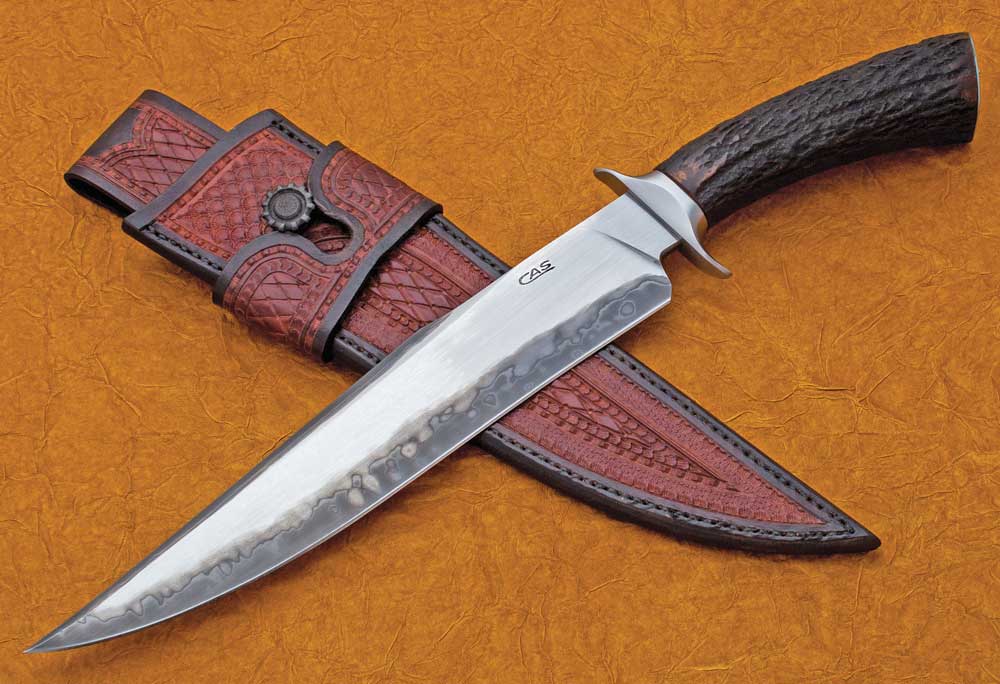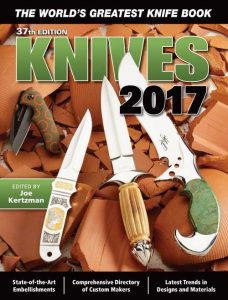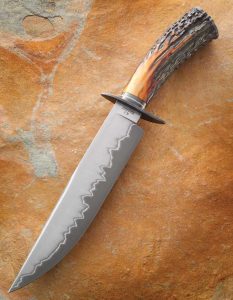


Bowie dispatched all three attackers using his knife. If interested in an in-depth look at the start of the Bowie legend, I highly recommend Dr. James Batson’s book titled James Bowie and the Sandbar Fight: Birth of the James Bowie Legend and Bowie Knife. Batson is not only an excellent researcher and writer, but also an American Bladesmith Society (ABS) master smith. His firsthand knowledge of crafting bowie knives gives him a special insight into the creation of Jim Bowie’s original knife.
Of all the great knifemakers and designers in the world, none of them have an entire category of knives named after them like Bowie does. The style of knife used by Bowie—now known simply as a bowie or bowie knife—saw some changes after the confrontation at the sandbar. Most notable were the addition of double guards to most bowies, and sharpened clip points with the appearance of the forward third of the blade spines being clipped off.
The knives bearing Bowie’s name gained such a reputation and following that they began to be mass-produced in Sheffield, England. Renowned makers such as Joseph Rodgers and George Wostenholm started making bowie knives. Estimates are that upwards of 70 percent of the bowies that went West with the first wave of pioneers came out of Sheffield.

The bowie knife enjoyed “must have” status for many soldiers on both sides of the Civil War. The bowie’s diversity was summed up by a historian of the time who described the knife style as, “ … long enough to use as a sword, sharp enough to use as a razor, wide enough to use as a paddle, and heavy enough to use as a hatchet.”
What is and what is not a bowie is the subject of numerous debates. Rezin Bowie, Jim’s brother who had the first knife made for his sibling, indicated the historic knife had a 9 ¼-inch blade. Given that there is no photo of the knife, we can only go by information historians have gathered. My take on the blade length of the first bowie is that it was between 9 and 11 inches.
I’d like to say I based this on Rezin’s comments but that is not the case. Certain blade lengths favor particular tasks. Bird-and-trout blades are usually between 2 and 4 inches. Hunters and skinners generally have blades in the 3- to 5-inch range. Camp knives often feature blades stretching from 5-7 inches, and fighters commonly sport blades in the 6-8-inch range.
Based on Rezin’s comment that the blade made for his brother was 9 ¼ inches, combined with the variety of chores that could be done with the bowie, the 9-11-inch range is where I place the bowie’s blade. All of the blade lengths mentioned are generalizations. Blade lengths are subjective, and different categories will often feature shorter or longer blades. I have seen gent’s or a gambler’s bowies with 4-inch blades and hunting knives parading 10-inch blades. When I see knives sporting blades that defy the conventional lengths of their category, I am reminded of my 7th-grade shop teacher who always reminded us to use the “right tool for the job.”
Editor’s Note: This article is from Knives 2017.
The World’s Greatest Knife Book
For going on four decades, Knives has been the most comprehensive and trusted resource in the knife world, delivering an entertaining and authoritative selection of features, industry reports and eye-catching knife galleries. The annual offers knifemakers, knife collectors, knife buyers and knife dealers the vital information they require. From reliable factory knives to custom-made gems, Knives 2017, 37th Edition cuts to the quick matter to raise readers’ blade IQ. Get Your Copy Now
BLADE’s annual Knife Guide Issue features the newest knives and sharpeners, plus knife and axe reviews, knife sheaths, kit knives and a Knife Industry Directory. NEXT STEP: Download Your Free KNIFE GUIDE Issue of BLADE Magazine
NEXT STEP: Download Your Free KNIFE GUIDE Issue of BLADE Magazine
Get your FREE digital PDF instant download of the annual Knife Guide. No, really! We will email it to you right now when you subscribe to the BLADE email newsletter.






